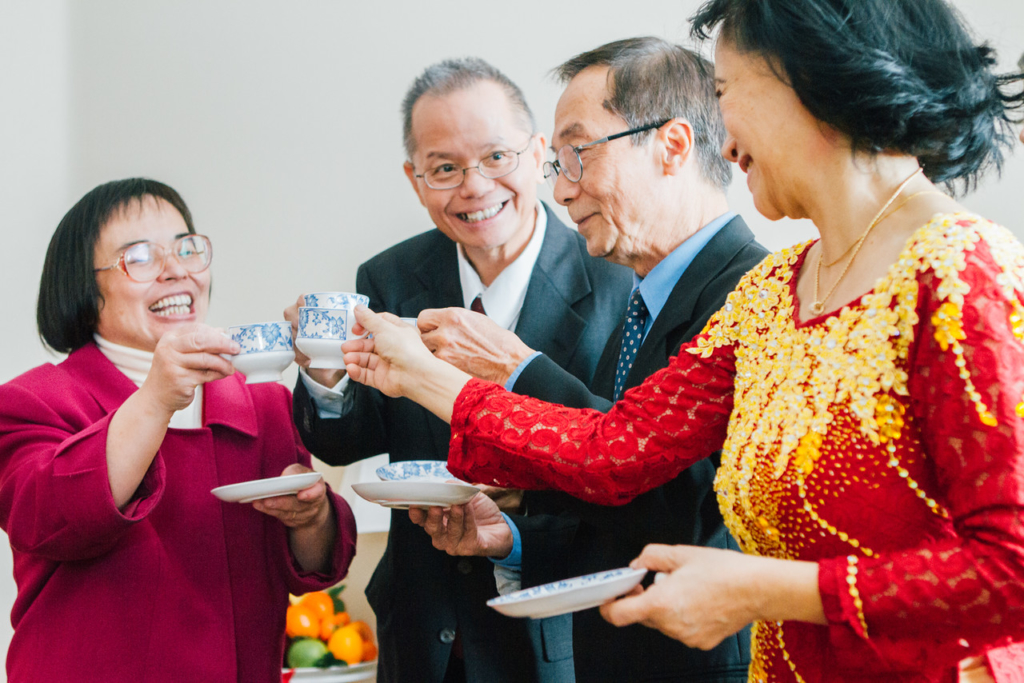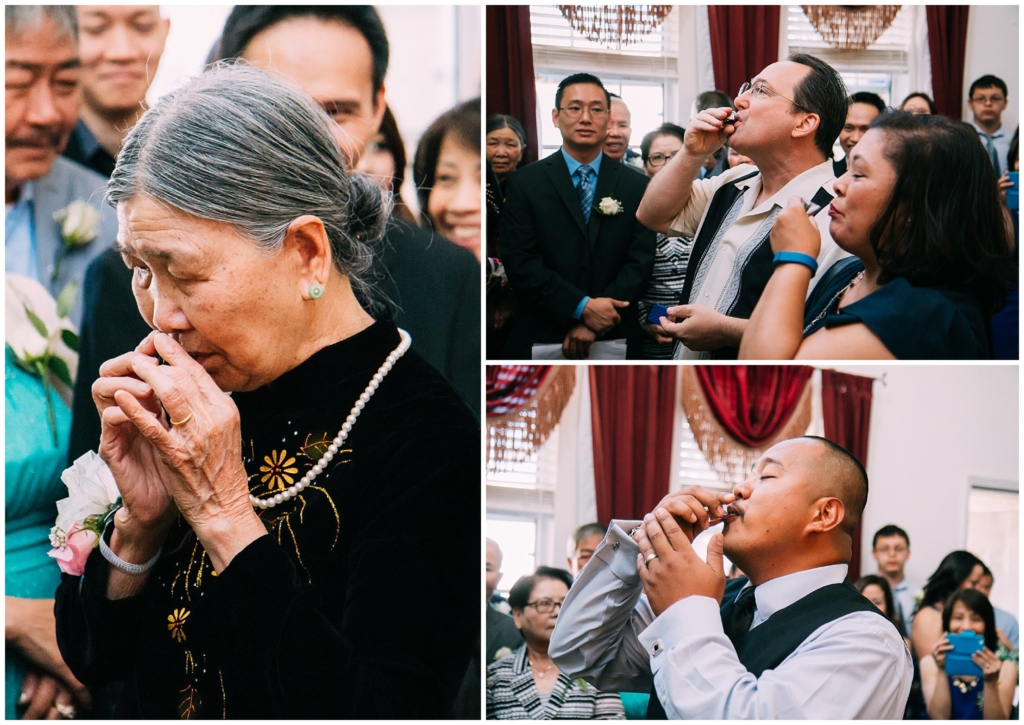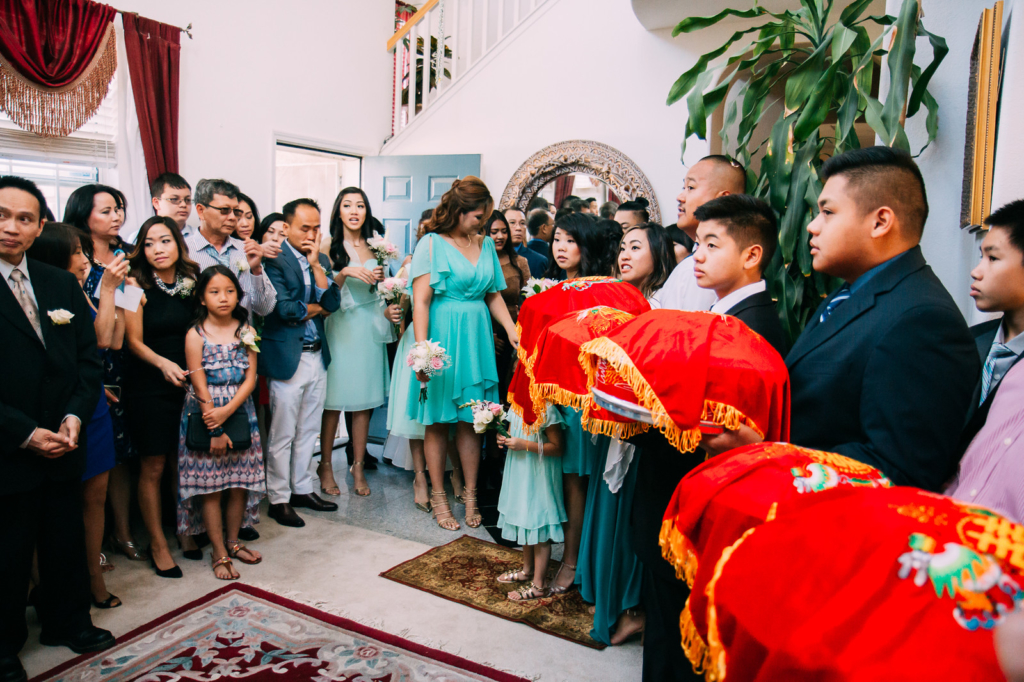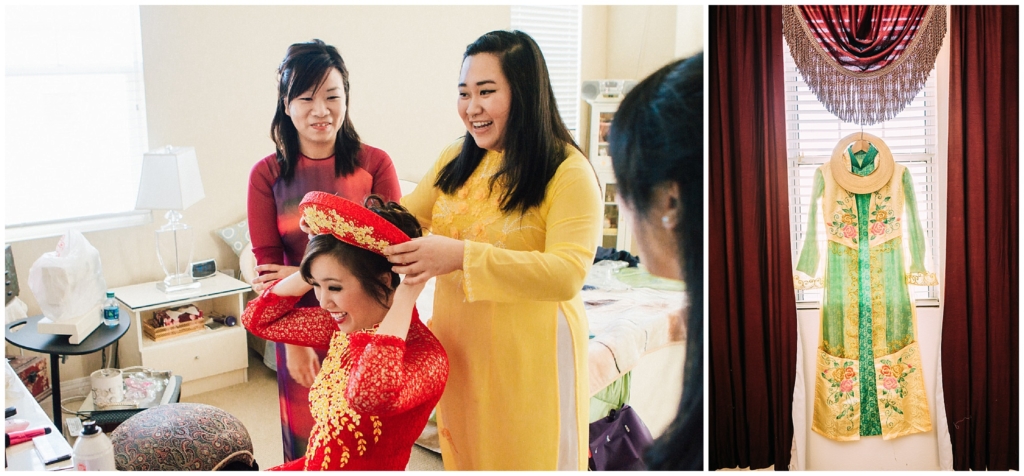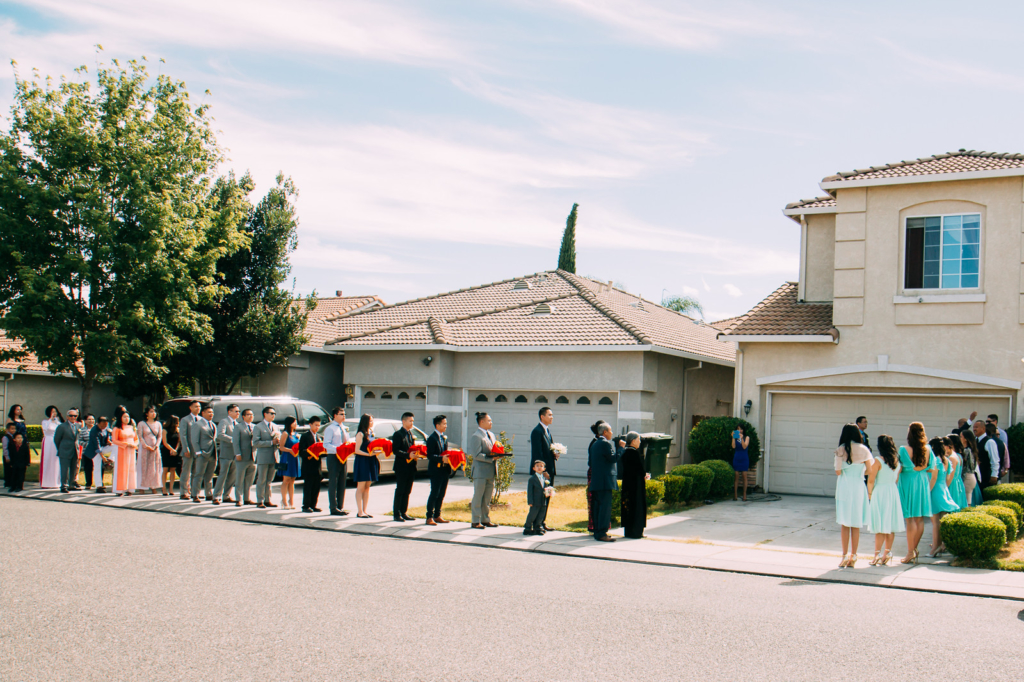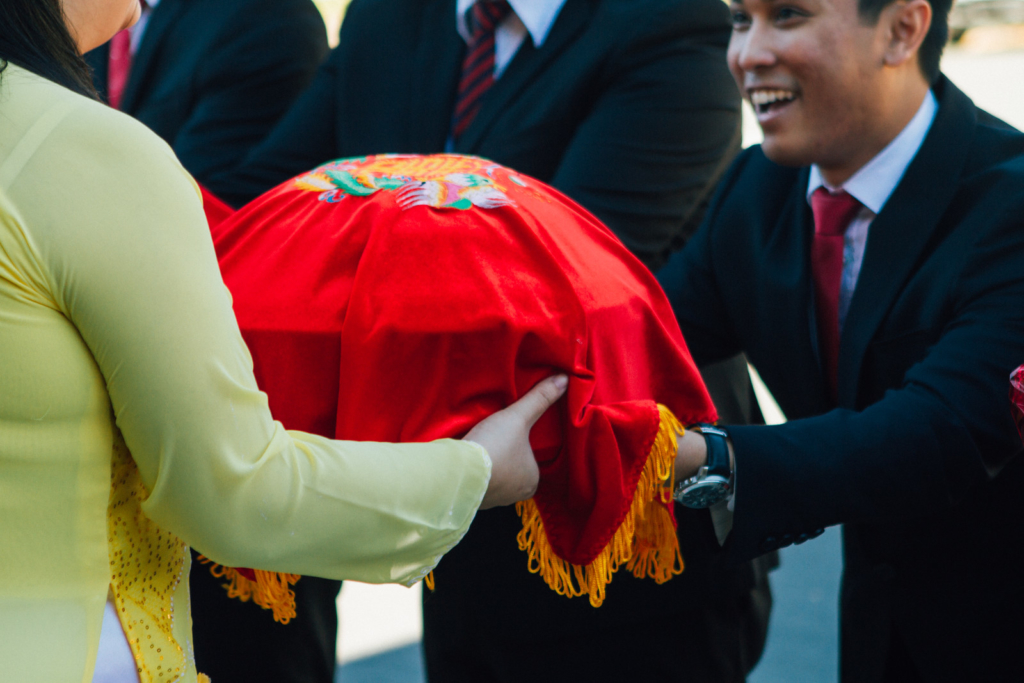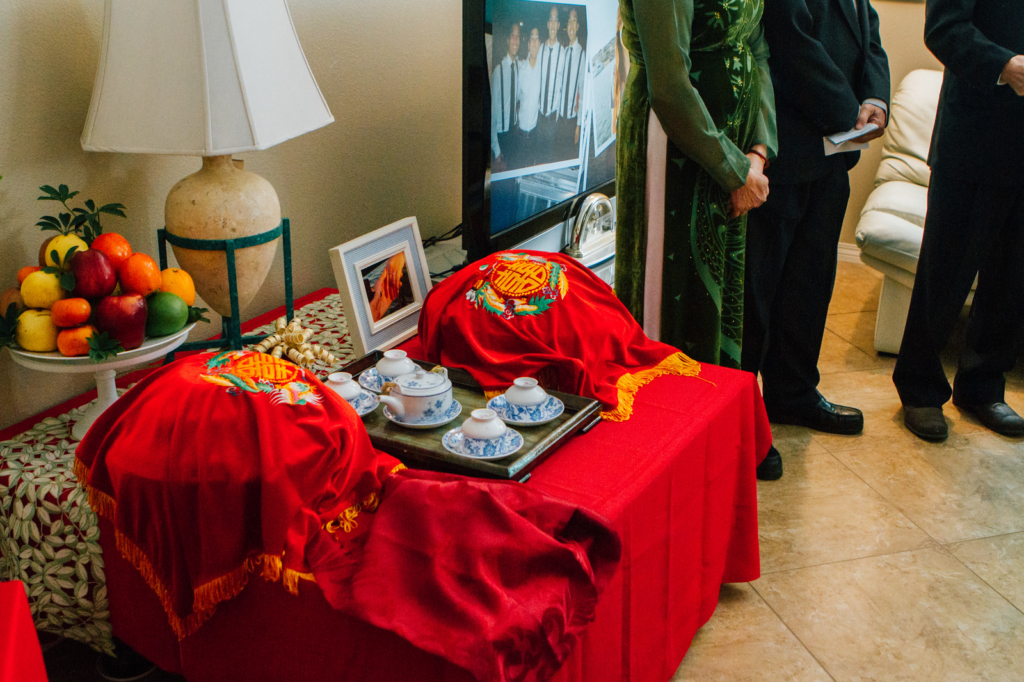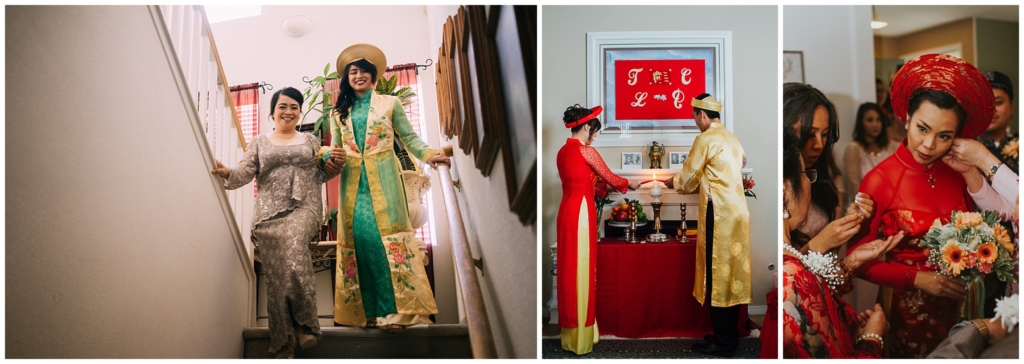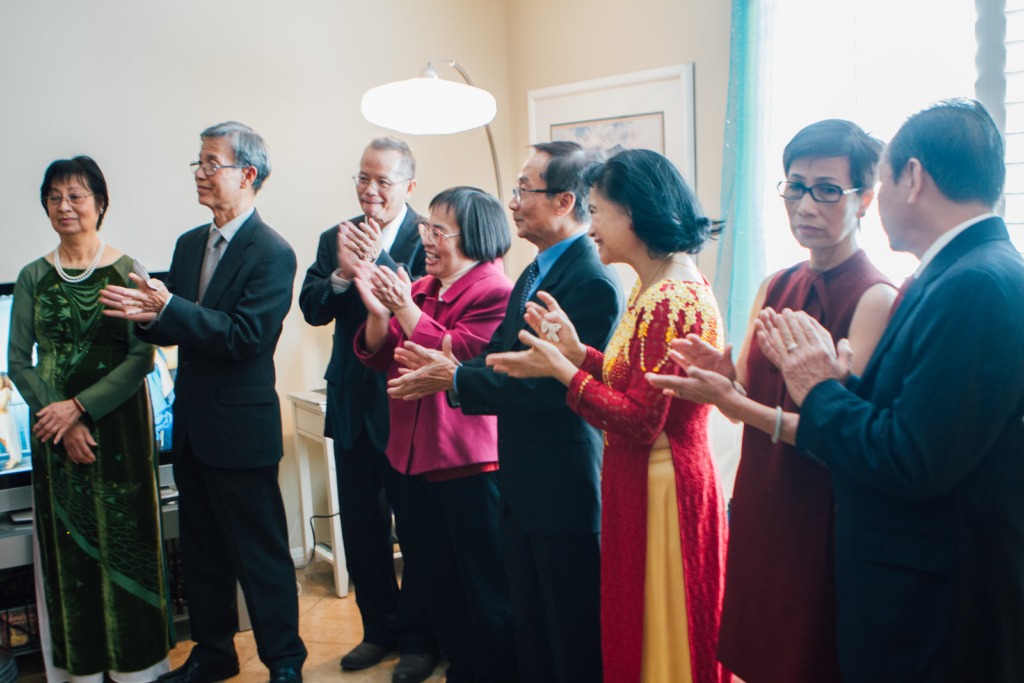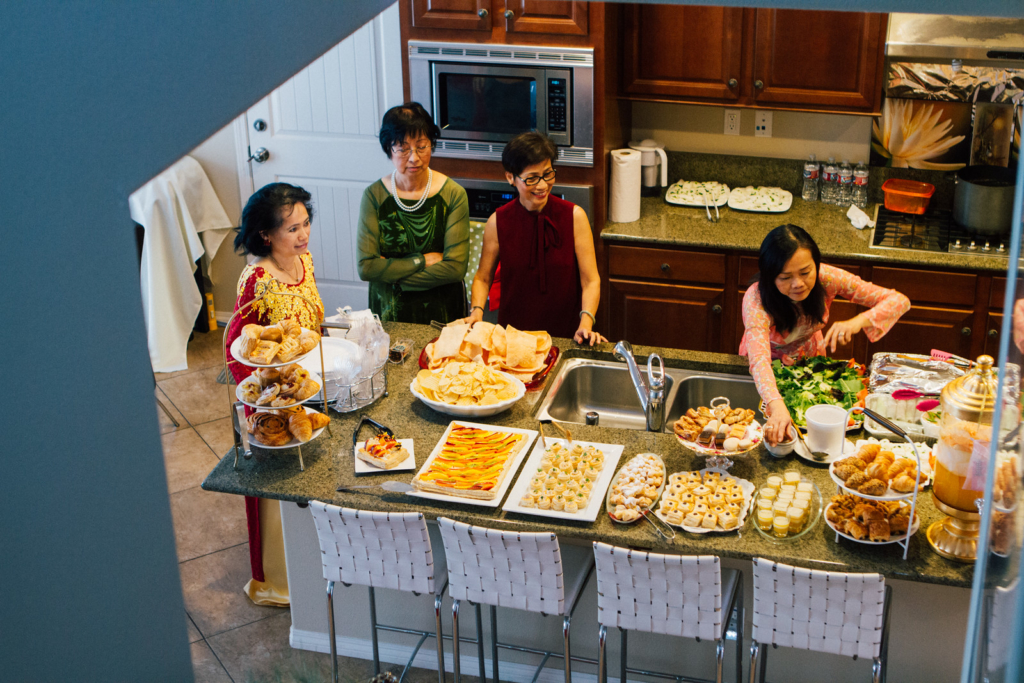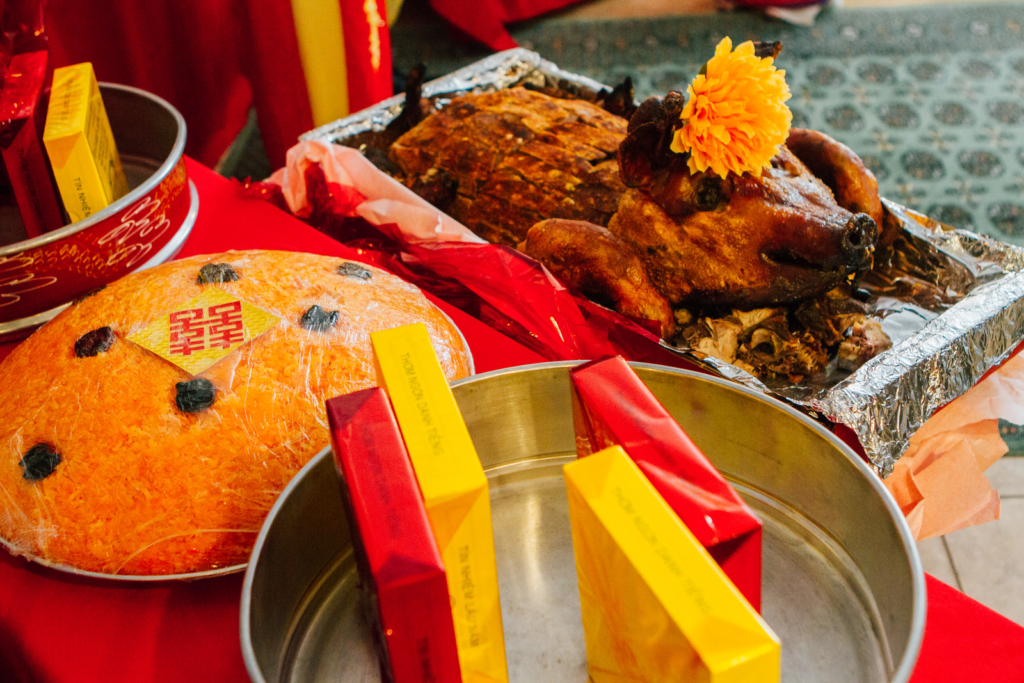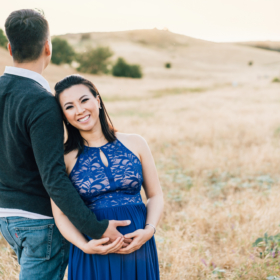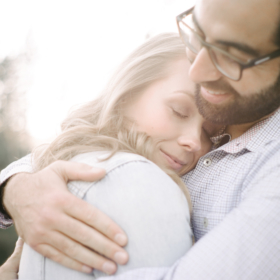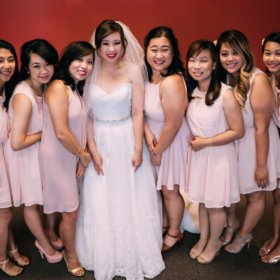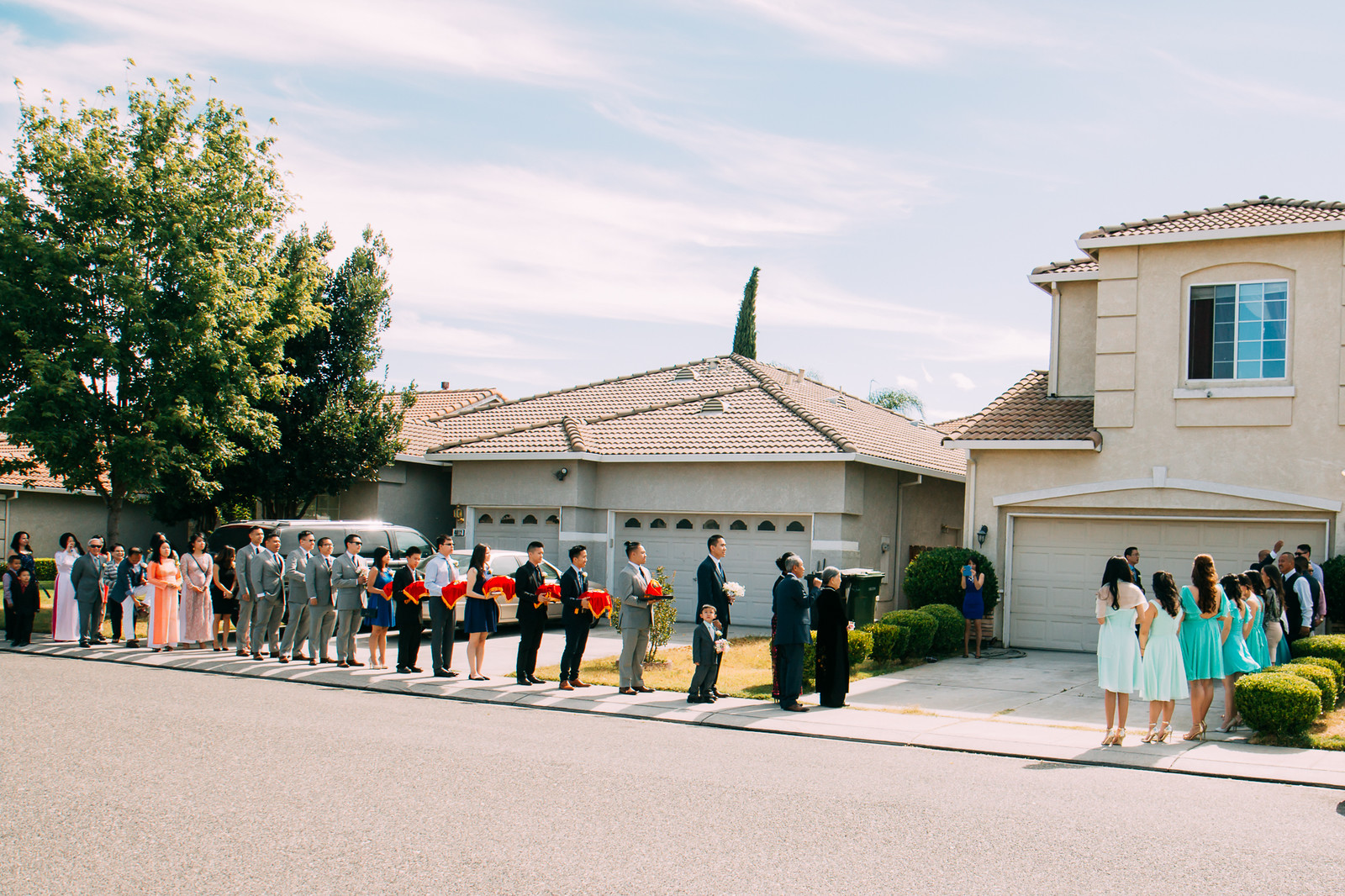
The Le Dinh Hon, or the engagement ceremony can also be referred to as the Dam Hoi which my family loosely translates to the asking party where the groom and his family asks the bride’s family for their daughter’s hand in marriage. This typically happens a year to six months before the wedding but could also be done the same day as the wedding. While families may vary on certain portions of this tradition below are the typical stages of a Dam Hoi and the tea ceremony which is often performed again on the wedding day.
Tea or “Tea”
Depending on your family the tea ceremony can be with real tea but more commonly or at least from my experience tea is a euphemism for wine or liquor in the teapot. So before you take a cup of tea remember that it could be a shot of alcohol. If you or your family have any dietary restrictions regarding that, it’s best to talk about that in the planning stages.
Planning and Organizing
Selecting the bridal party before the engagement party might seem pretty early for some couples, but you typically would like to nominate your bridesmaid and groomsmen before this event. While it is an engagement party, you would still like to have your closest friends to be part of this ceremony. Then you would need to select the speakers for the event. Depending on your parent’s comfort level with public speaking they may assign a representative to do most of the talking.
The festivities are typically held at the bride’s family or her home if she lives away from her parents. Bare in mind that everyone in attendance will have to be able to fit in the living room of the home. You may want to keep this engagement ceremony intimate if there’s not much standing room in the chosen home. Plan the guest list accordingly.
There will be an exchange of gifts, and it might be best to disclose how many items there will be so that there are enough people on the bride’s side to receive the gifts. You will also need a table to place the gifts and tea set during the ceremony. I would also recommend getting a portable amplifier and microphone for speeches. More on that later.
Traditional outfits
Ao Dai is the traditional Vietnamese garment often made of silk with various patterns and embroidery. There are versions for men and women. Typically the bride’s dress will be much more extravagant and detailed than her bridesmaids or the groom. There is also a headpiece called the Khan Dong for special occasions. If your family or guests are also wearing an Ao Dai, the Khan Dong will help single out the couple as the bride and groom.
Setup
The bride’s family will tidy and dress up the house with flowers and festive colors. Typically there’s an archway and signage to signal to the neighbors and attendees that there is an engagement party at their home. There usually will be a lot of cooking so that the guest can eat after the ceremony. Make sure to allocate enough time so that all the cooks can get ready as well, especially if the mother of the bride is leading the kitchen. The bride will get dressed and apply make-up while staying out of sight of the guests until called for.
Traditionally the groom’s family would all travel from their home to the bride’s house. But for logistics and with the convenience of cars typically the groom’s party will meet down the street from the bride’s home.
The Procession
The groom and his family will make their way towards the bride’s house. Typically lead by the groom’s parents then the groom, often with a bouquet of flowers. Then he’s followed by the men from the groom’s side each carrying trays called Mam Qua. I’ve also seen situations where siblings are also carrying trays in which this ritual is not limited to just men. These trays contain gifts offered to the bride’s family. Traditionally there is an even number of Mam Qua where the bare minimum includes a roasted pig, and a tea set. The larger number of gifts the more significant amount of wealth is displayed.
Additional gifts can include:
Betel and areca – symbolic of marriage
Boxes of Tea or Bottles of “tea” – bottles of alcohol can be the heaviest
Fruit – is usually the heaviest
Sticky Rice, Cakes or other pastries
As the groom’s side finishes assembling, the bride’s family will line up outside of house’s the entry way. My family typically asks all the girls on the bride side to stand outside first since Ao Dais are colorful and make for great photos. The groom’s parents will lead the party to the house and greet the bride’s parents. The bride’s parents will welcome them into the home. The bridesmaids or family representatives will help the groom’s party by receiving the gifts and lead them into the house. Logistically this also helps since the bride’s party should know which table to place the items. As the groom’s party and family walks through the entryway of the house they’re typically applauded, hands get shaken and lots of “welcome” or “good morning” is stated.
During this whole time, the bride remains upstairs or in a separate room. If she’s lucky, she can get a peek at the window to see the exchange. Otherwise, it can get pretty dull so make sure her waiting room has a phone or something to stay busy.
The Ceremony
Upon entering the guests may bow to any family ancestors or religious figures in the home. People tend to line along the side of the room leaving an open space in the middle for the gifts and the groom. Typically a welcome speech is done first by the bride’s family followed by introductions of all the family members in attendance. Then the grooms family will introduce their side followed by opening the gifts that they would like to offer. I’ve also witness ceremonies were family introduction is held after the bride joins the celebration so if it feels natural roll with it. Some thoughtful words are shared about the relationship between the couple. If both sides of the family approve of this union then a request for the bride’s presence is made.
The mother of the bride will retrieve her daughter to meet everyone. If the groom has a bouquet of flowers this is typically the time to gift it to the bride. The bride and groom will burn incense and bow to an altar for approval from the bride’s ancestors. If they’re catholic they may sometimes do a prayer instead. There is often times a candle ceremony where both couples will light a candle as a symbolism of unity between the two families. Then both sides of the family take the turn to share some encouraging words. Typically the groom’s mother will present the bride to be with jewelry. Sometimes she will also give the engagement ring but often times the groom will do the honor.
After the ring, there is the ceremonial portion of serving tea to the parents and grandparents. Depending on the size and enthusiasm of the family it may just be for the parents. Sometimes all married couples will also be served tea in exchange for advice. Occasionally every single individual will be served tea and will share some kind words. After that, the bridal party will invite everyone to lunch.
The Lunch
This will include the food that the groom party brought and cooking from the bride’s side of the family. This is an opportunity for both sides of the family to get to know one another before the actual wedding day. I’ve to witness some engagement parties where the bride’s family took their guests out to a restaurant for lunch. Depending on the size and formality this might be a less stressful route to take. During this lunch, the bride and groom will run off to take some formal photos with family and on their own. Once completed they will eat and greet all the attendees.
Conclusion
Usually, there will be another gathering of thanks for all coming together. This is often when the bride’s family will return half of the gifts to the groom side as an appreciation of the generosity but also show that because they’re now one family, it should all be shared. The exchange will happen in reverse where the bridesmaids will gift back half the items to the groomsmen. Then the groom’s family will depart and pack items into their cars. In most cases people leave after that, and in others, it’s just a formality, and the party continues for the rest of the day.
We hope that this helps with the planning of your own Dam Hoi. Are there any unique traditions that your family has? Comment below because we would love to hear them!
